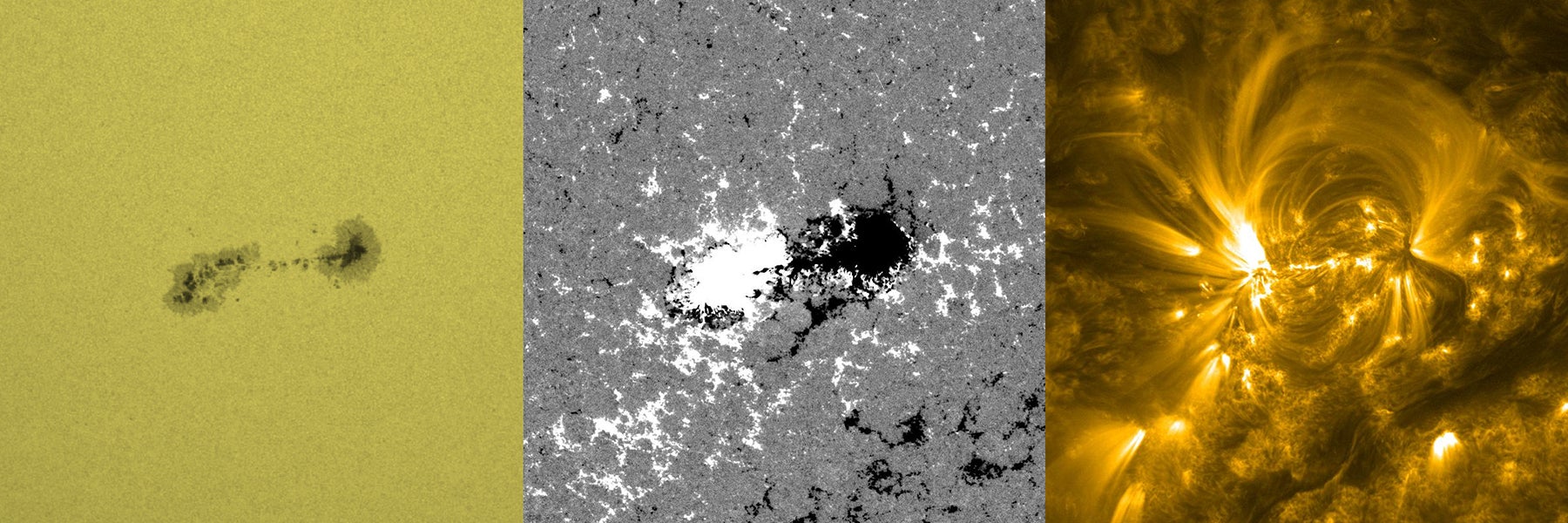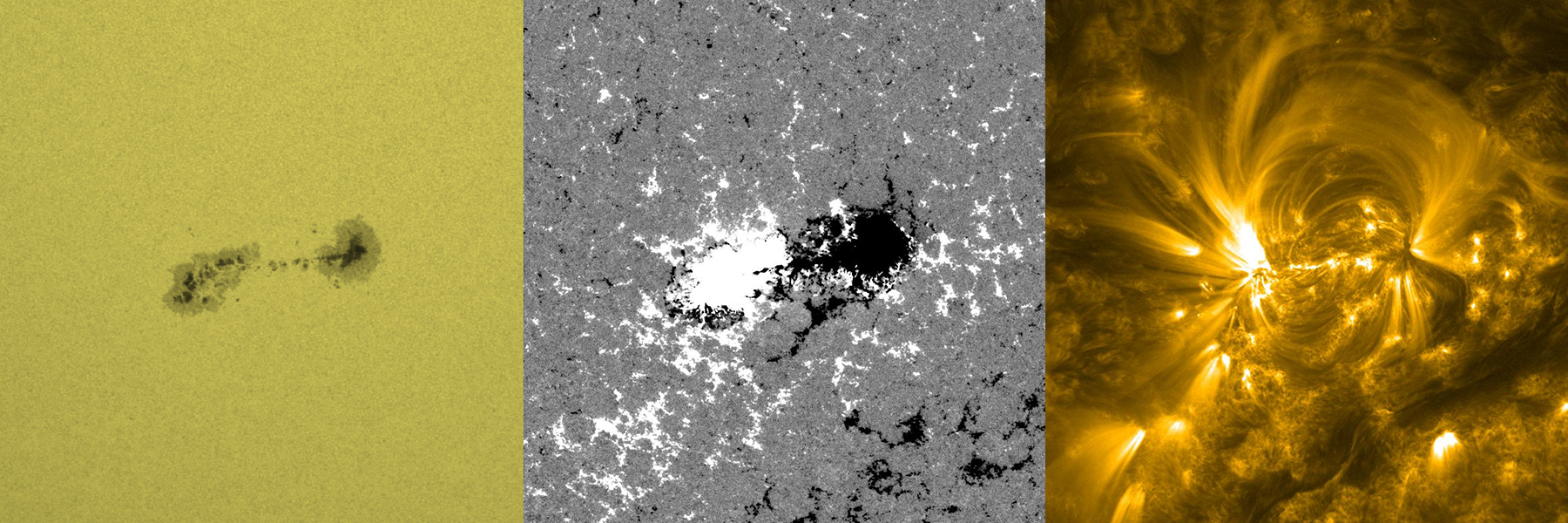
These three panels show Active Region 13055 on the Sun on July 11, 2022. The same region appears in visible light (left), as a magnetic field measurement (middle), and in extreme ultraviolet light (right). Credit: Lisa Upton, Courtesy of NASA/SDO and the AIA, EVE, and HMI science teams
What causes sunspots? Do they form on the surface of the Sun or well up from below?
Gil Roscoe
Valley Village, California
Sunspots are dark regions on the Sun that are about the size of Earth. They are caused by strong magnetic fields that emerge through the photosphere, or surface, of the Sun. The spots themselves don’t exactly well up from below, but are a visual effect caused when heat is prevented from doing so.
Our star is so hot that it undergoes convection in the outer third of its interior, causing the surface to boil like a pot of hot water (seen as tiny bubbles in the visible-light image on the left, above). At these temperatures, the matter is converted to a plasma — an ionized gas — in which the electrons and protons are free to move separately.
Magnetic fields within the Sun’s convective interior are transported by plasma flows that stretch and amplify the fields’ strength. When they grow stronger, these magnetic fields become buoyant and rise up, emerging though the photosphere. The effect is like pulling on a bundle of ropes with weights on both ends: The field lines remain anchored to the surface in two places, creating a loop. The places where they emerge from the surface are called footpoints. The field that comes out of the surface at one footpoint has a positive magnetic polarity and the field that goes back in at the other footpoint has a negative polarity (shown in the middle image with the positive/negative field represented by white/black).
The magnetic field lines above the surface are filled with plasma and are heated in the corona, forming beautiful glowing ultraviolet arches known as coronal loops (shown in the extreme ultraviolet image on the right). These stunning arches are invisible in the white-light spectrum that we see with our eyes. But we do see the footpoints of the arches, where the magnetic field emerges through the photosphere. These are the sunspots! They appear dark relative to the surrounding plasma on the solar surface (as seen in the visible-light image on the left) because they are cooler. This is because the intense magnetism at the footpoints slows convection, preventing heat from welling up from below.
Lisa Upton
Solar Physicist, Space Systems Research Corporation, Boulder, Colorado

